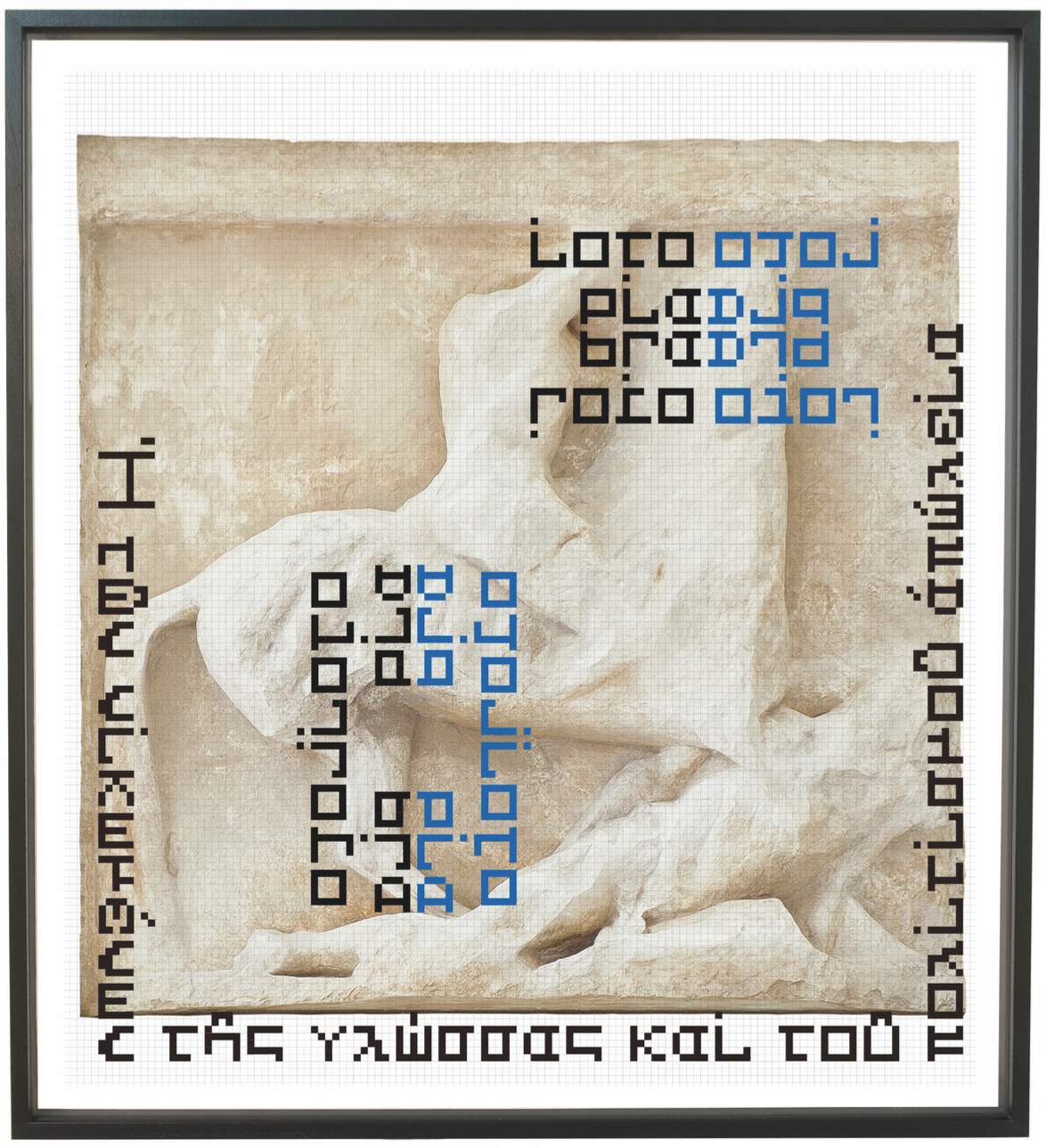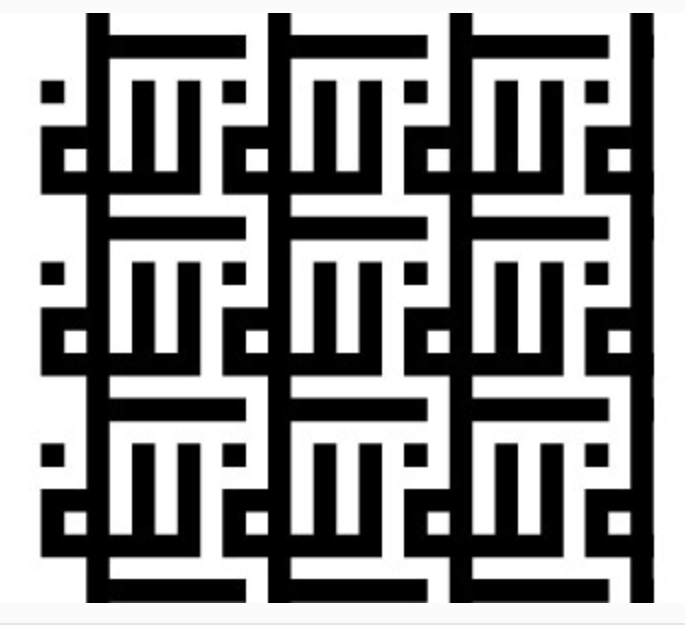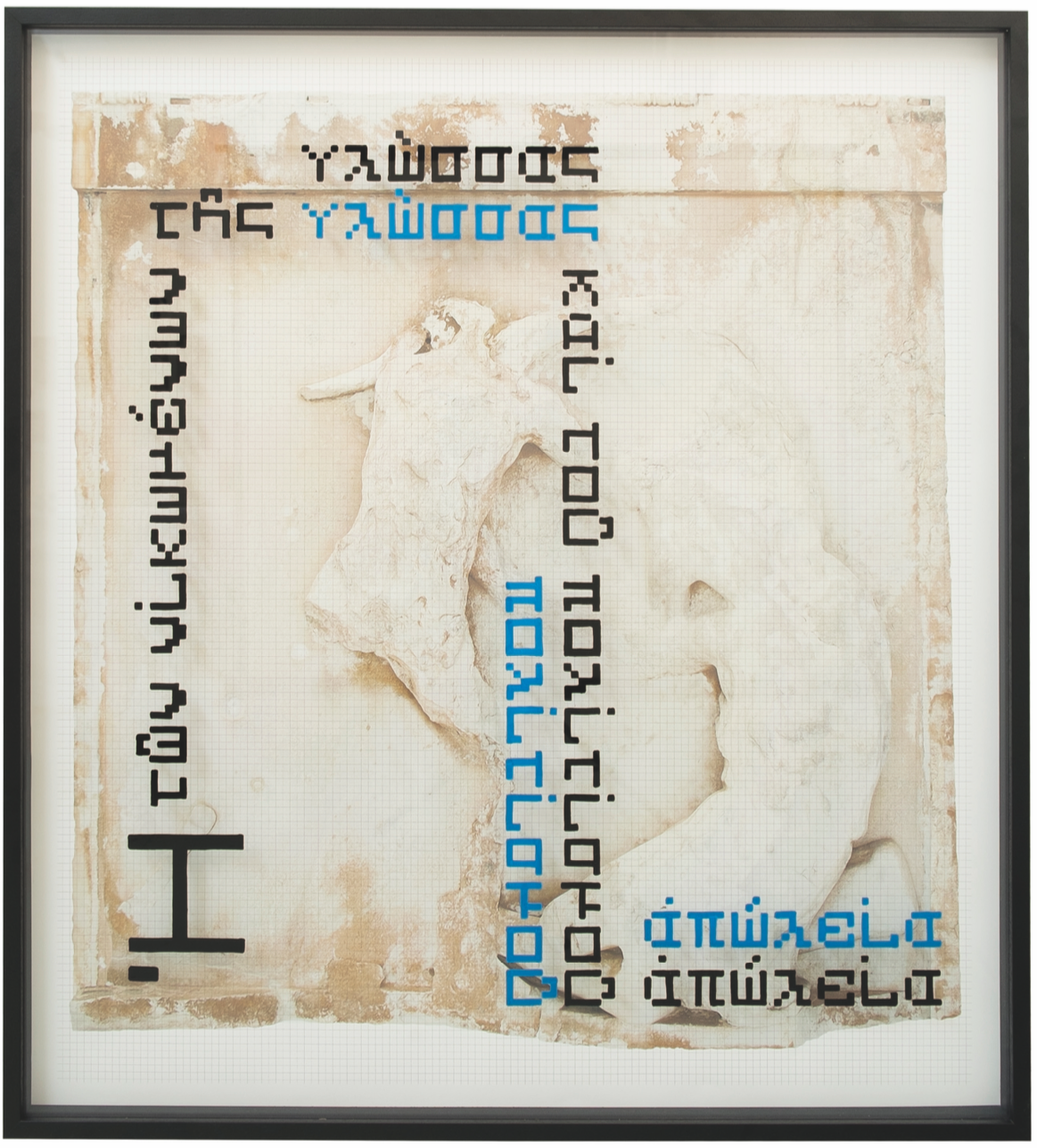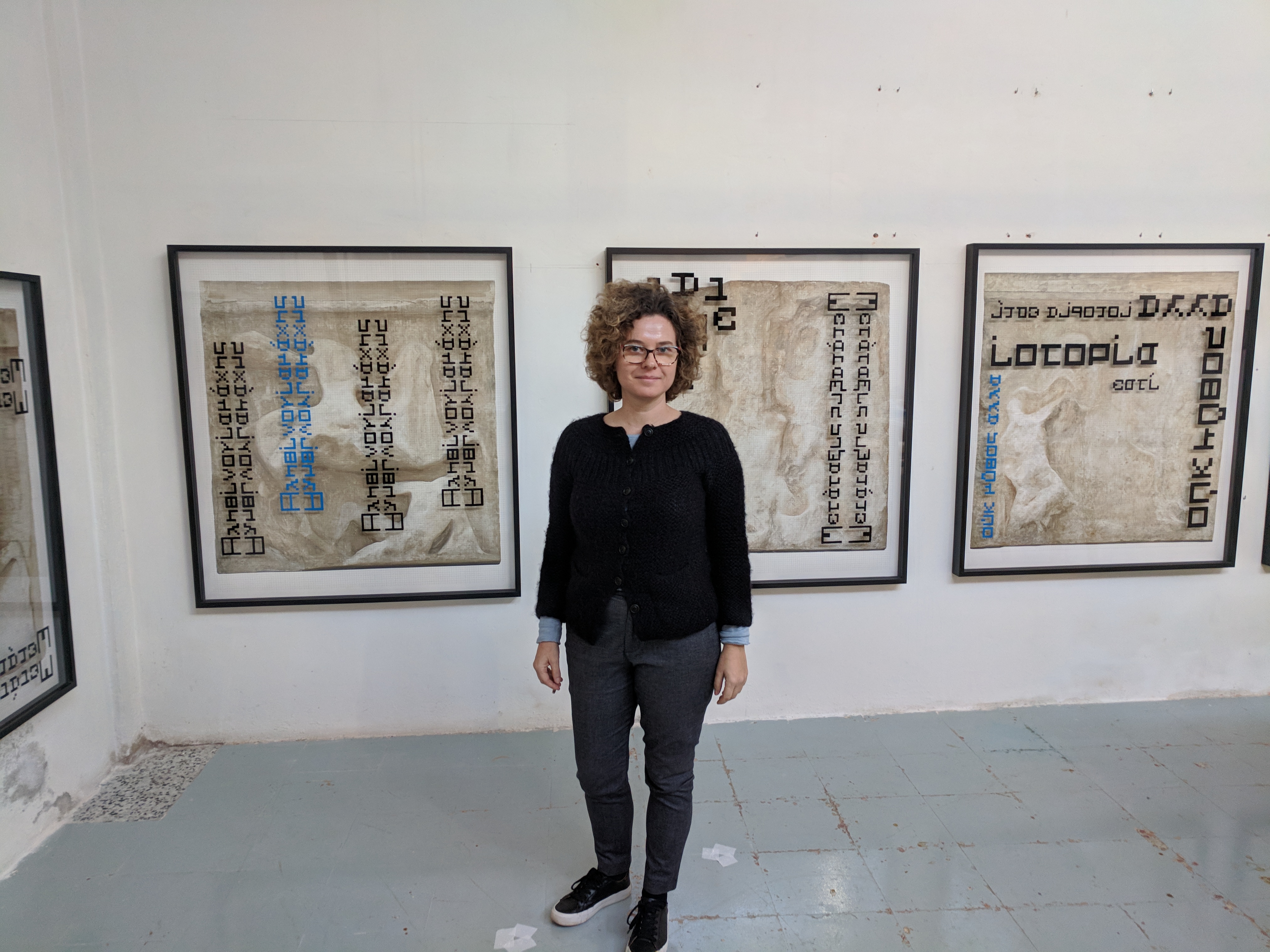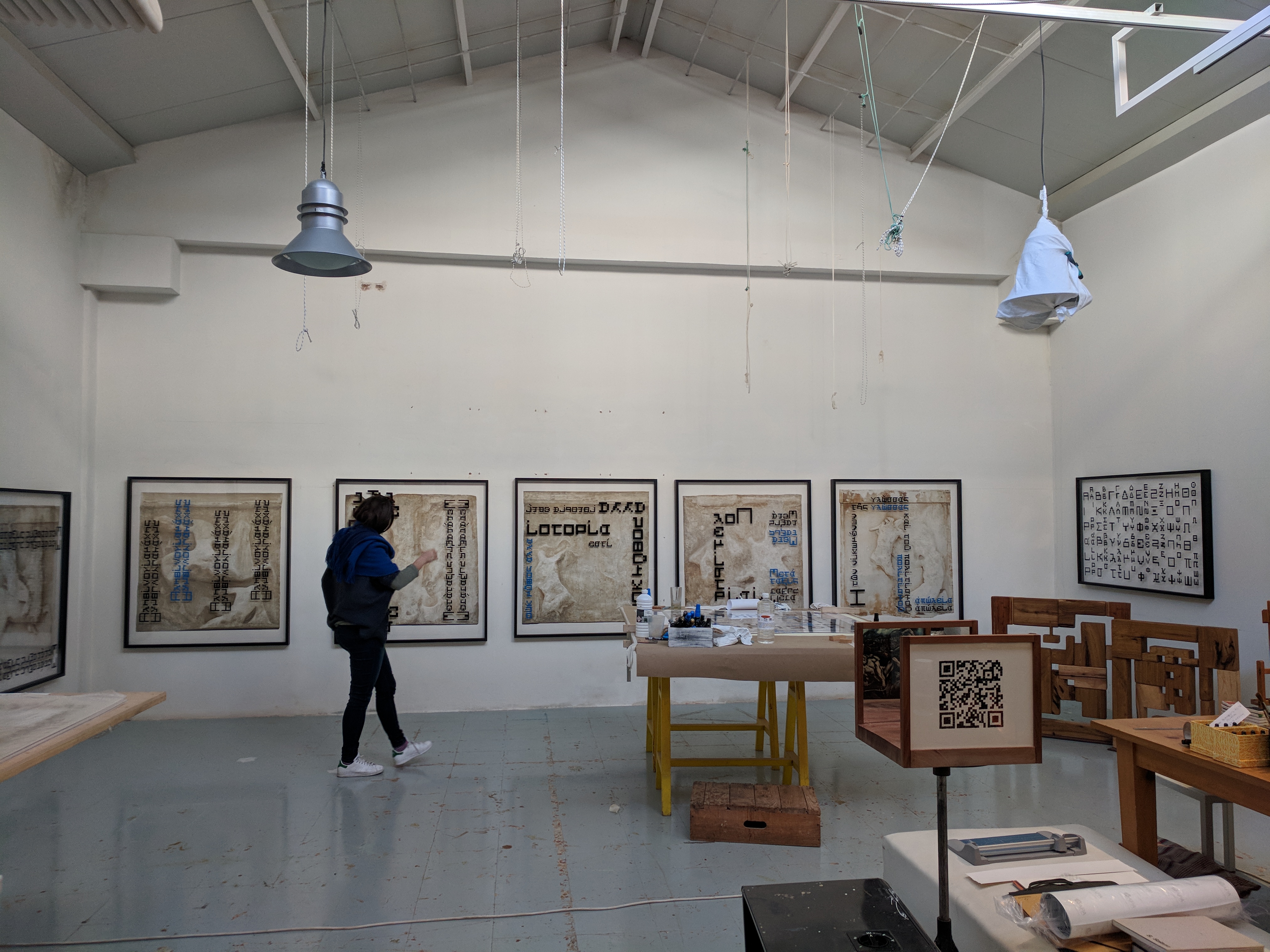Re-imagining the Amazonomachy: ‘Modern classicisms’ meets Clara Carvajal
Belinda Martín Porras, Student Ambassador on ‘Modern Classicisms’, reports on her recent discussions of ancient and modern art with Clara Carvajal…
In February 2018 I had the chance to visit the studio of Madrid-based artist, Clara Carvajal. Carvajal is currently working on an exciting project, supported by Madrid City Council. The project is informed by one of the most celebrated and dramatic stories of classical mythology: the Amazonomachy.
Carvajal’s work explores language as an encrypted means of communication – something that has led her to research modern-day digital and analogue graphic scripts, in turn rethinking their relationships with classical precedent.
For her series Amazonomachy 1.1, Clara Carvajal has re-appropriated the imagery of battle-scenes between the Amazons and the Greeks – as depicted on the damaged western metopes of the Parthenon. The imagery is reimagined in a series of photographic and oil works, which themselves bring together different sorts of semantic systems. Challenging a residual logocentric bias – the tendency to privilege speech over the graphic aspects of writing – her work employs a sequence of words that are styled in the manner of ‘barcoded’ Greek text, the meaning of which would only be revealed via a QR code-reader.
Sometimes those words appear duplicated, taking on an inverted direction (proceeding from right to left), as can be found in the ‘mirror-writing’ of Square Kufic script (bannâ’i or ‘masonry script’). Developed in the Middle East in the eighth century BC, this technique – used by architects and artists to adorn surfaces with pixelated patterns – anticipated the digital aesthetics of the pixel, as well as modern QR code. By emphasising the formal and decorative value of her ‘texts’, Carvajal develops the age-old paragone between language and imagery. At the same time, she seeks to reclaim the visual power and immediacy of artistic communication, at once resisting and transforming endemic cultural traditions.
From this broader perspective, Carvajal’s imagery of the battle between Greeks and Amazons takes on a larger significance. The Amazons – themselves female warriors who inhabited ‘barbaric’ lands, playing the ‘other’ to the Greeks – might be said to be fighting not just the Greeks, but also perhaps Greek logos. Just as the Amazons embody a challenge to cultural conventions, moreover, they also raise questions about myth – and the boundaries between legend and history.
Clara, you are trained as a sculptor – and in many of your photographic interventions and videos, sculptures play an important role. Did you conceive of your series Amazonomachy 1.1 as a sculptural work per se?
Yes, that’s right. I often use sculpture as a starting-point for developing my works, even if don’t always incorporate three-dimensional media strictly speaking. For example, in Amazonomachy 1.1 I ‘intervened’ in the west metopes of the Parthenon – via a superimposition of photographs, drawings and texts. Although the works are not, formally speaking, three-dimensional pieces, I wanted in a sense to evoke – with that juxtaposition of techniques – a palimpsest of new meanings.
Could you elaborate more on the idea that ‘the medium is the message’ which seems to permeate your oeuvre?
For me, every artwork has an element of communication. Communication implies conveying a message, and in my case the meanings of that message are the visual and verbal languages I show in my pieces – as well as their implications as cultural symbols. What really interests me is the ‘materiality’ of the verbal – the graphic elements of language, and their interaction with the visual ‘languages’ of art.
In your work you highlight the capacity of art to bring together different, distinct and distant visual languages in time and space, such as Kufic script with contemporary QR code. How did you come to work with the Greek alphabet? What were you particularly drawn to?
Working with both Kufic and QR scripts made me realise the barriers that inhere in languages. Alphabetisation has made us forget the extent to which reading and writing were restricted to the elite in the past, and the quasi-religious aspects attached to these activities in certain cultures. When I started creating the Amazonomachy series, I began to think about what language I should use. In the end I decided it would make most sense to develop an alphabet that somehow represented the Amazons’ own hybrid culture –between the Greek and ‘non-Greek’ worlds, and between West and East. This is why I was tempted to use the Greek alphabet in combination with the QR-Kufic script.
Images:
Amazonomachy 1.1 # 3 (2018). Oil on methacrylate, ink photography and wooden frame, 124 x 113 cm.
Kufic composition where the black and white spaces both spell ‘Allah’ (cf. here).
Detail of Amazonomachy 1.1 # 1 (2018). Oil on methacrylate, ink photography and wooden frame, 124 x 113 cm.
Clara Carvajal at her studio – showing some of the Kufic scripts examples that inspired her work.
Detail of Amazonomachy 1.1 # 14 (2018). Oil on methacrylate, ink photography and wooden frame, 124 x 113 cm.
Clara Carvajal poses in front of her Amazonomachy series. Oil on methacrylate, ink photography and wooden frame, 124 x 113 cm.
General view of Clara Carvajal’s Studio.

